28 essential beat production guides
Spice up your loops and improve your drum programming and mixing skills
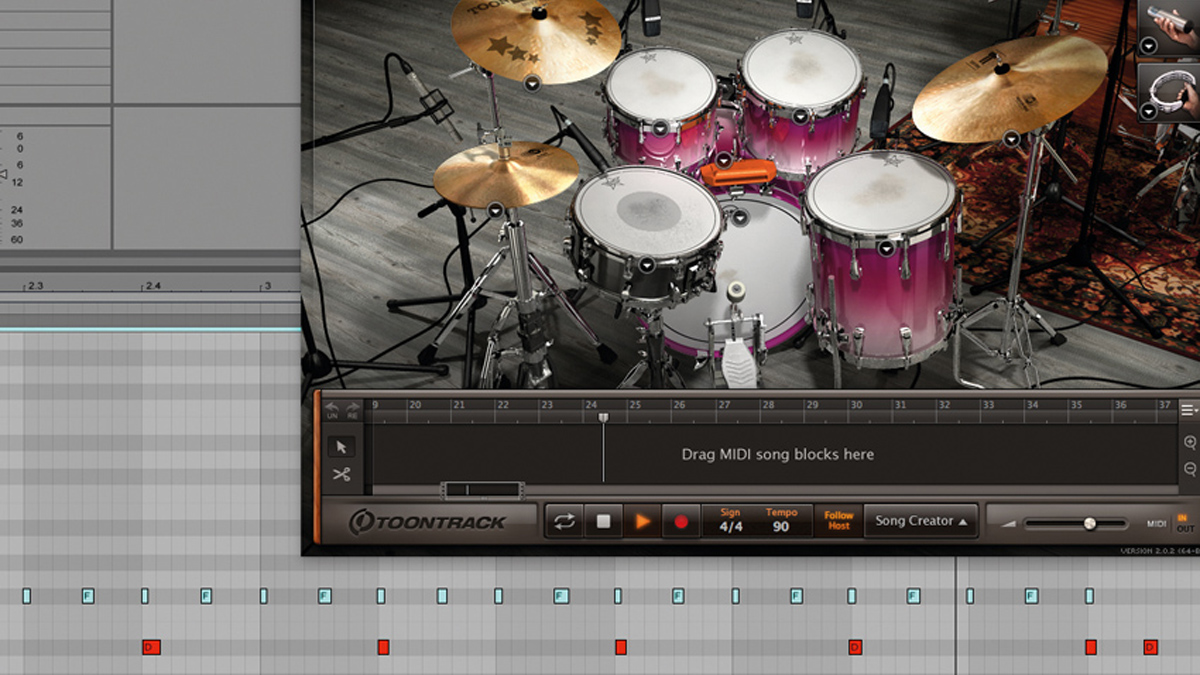
Welcome
Beats are incredibly important in modern music, but they can sometimes be the trickiest things to get right. If you need a helping hand in crafting choice loops, programming killer rhythms and honing our drum mixes, you need look no further.
Check out our huge round-up of guides to discover all kinds of ways to become a beat master.
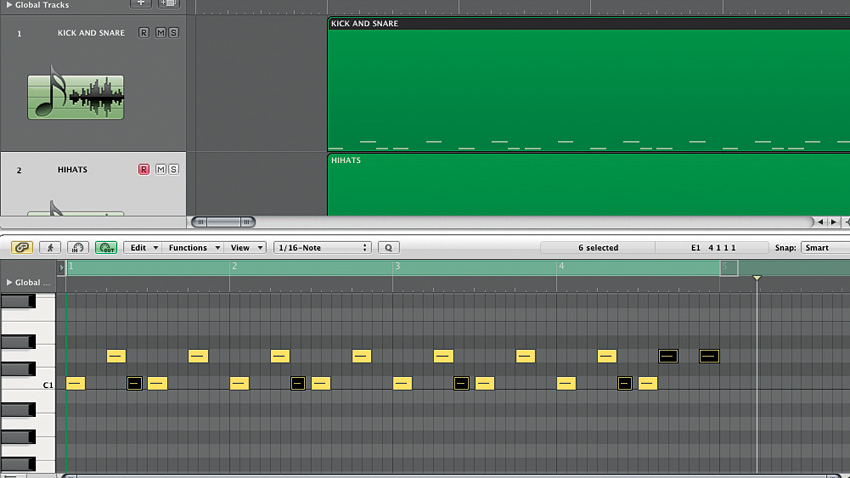
1. How to program realistic drum parts: basic beat
Before you can hope to get your sample-based drum kit parts sounding like the real thing, you need to master the basics of beat construction, and in this walkthrough, we're going to help you do just that.
Starting right at the beginning, we'll lay out a very simple kick/snare/hi-hats groove in four simple steps.
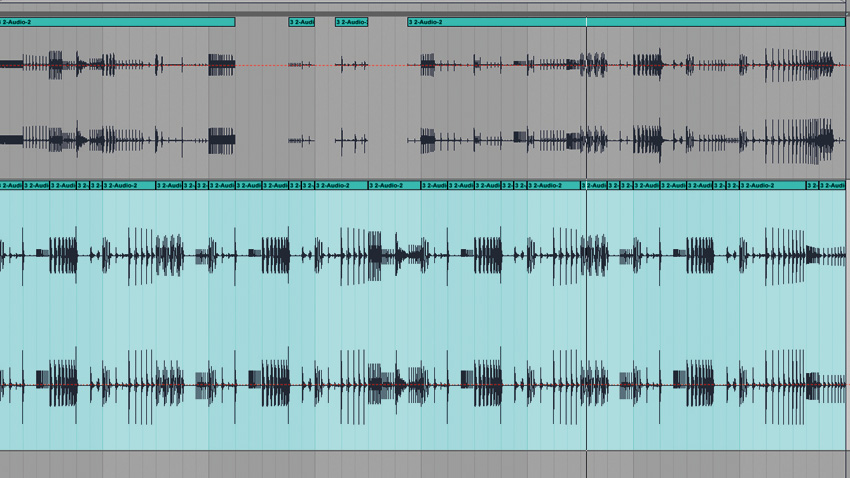
2. How to create glitched-out beats
Glitch effects are often erratic and tend to spit out bizarre results - ideal when searching for inventive sonic variations, but not so great if you only require a small dose of disorder within a track.
Learn how to turn simple percussion tracks into glitching grooves.
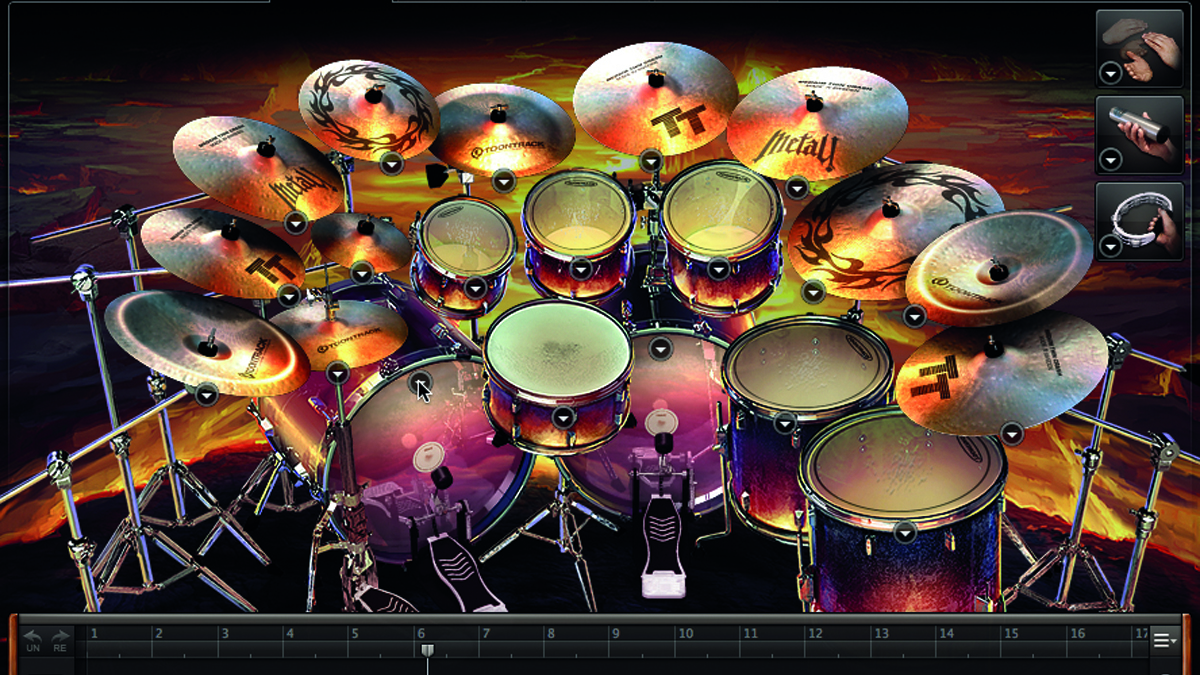
3. How to program authentic double kick drums for harder beats
The thunderous, chest-battering sound of double bass drums has been part of the drumming vocabulary ever since big band legend Louie Bellson popularised the addition of a second kick to the drum kit.
Learn to apply this powerful rock drumming technique to your tracks.
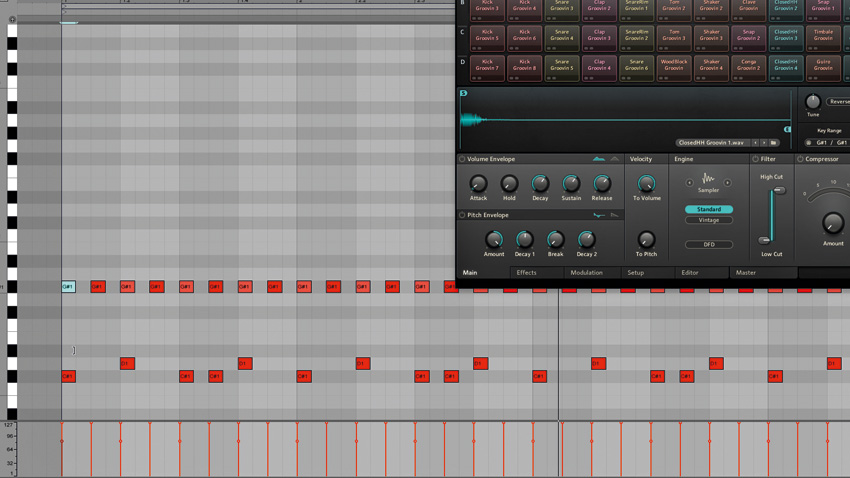
4. How to displace individual parts of a beat to change its feel
The fact that contemporary Western music is so heavily backbeat-orientated gives the adventurous drum programmer endless scope for playing with their listeners' rhythmic expectations by shifting beats from their expected positions in such a way as to go beyond conventional syncopation.
Let's take to the MIDI editor and transform a groove.
How to displace individual parts of a beat to change its feel
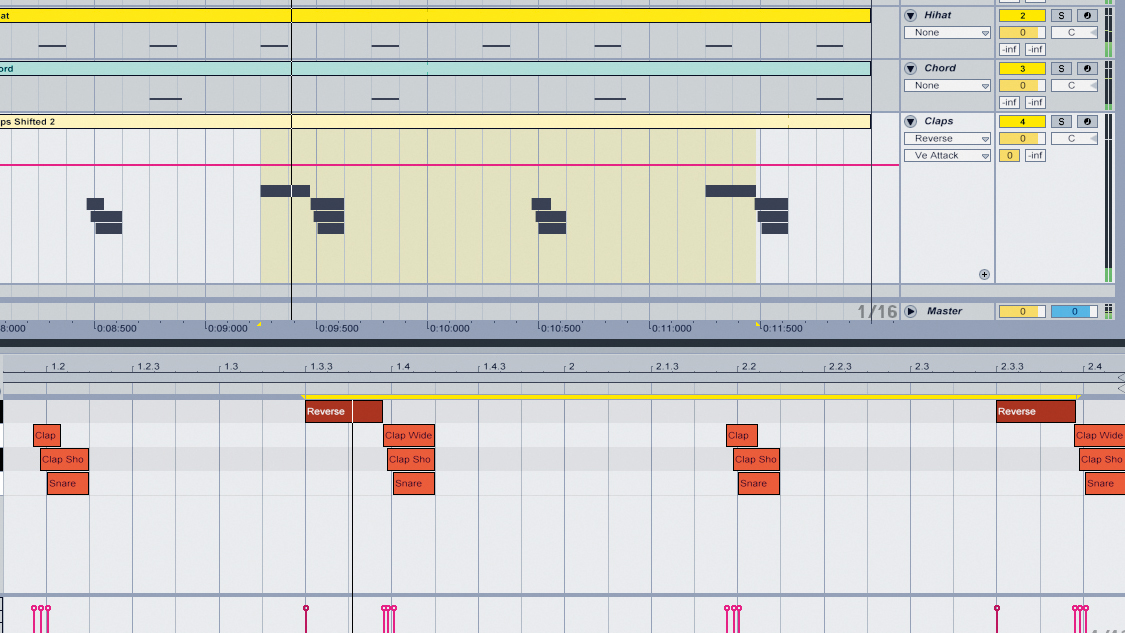
5. How to add groove to a house beat with manually layered claps
Turning off your quantise function and pulling back your claps is a great way to give your rhythm groove a lovely 'thwack' or 'splat'.
We show you how to create shuffled claps in Ableton Live.
How to add groove to a house beat with manually layered claps
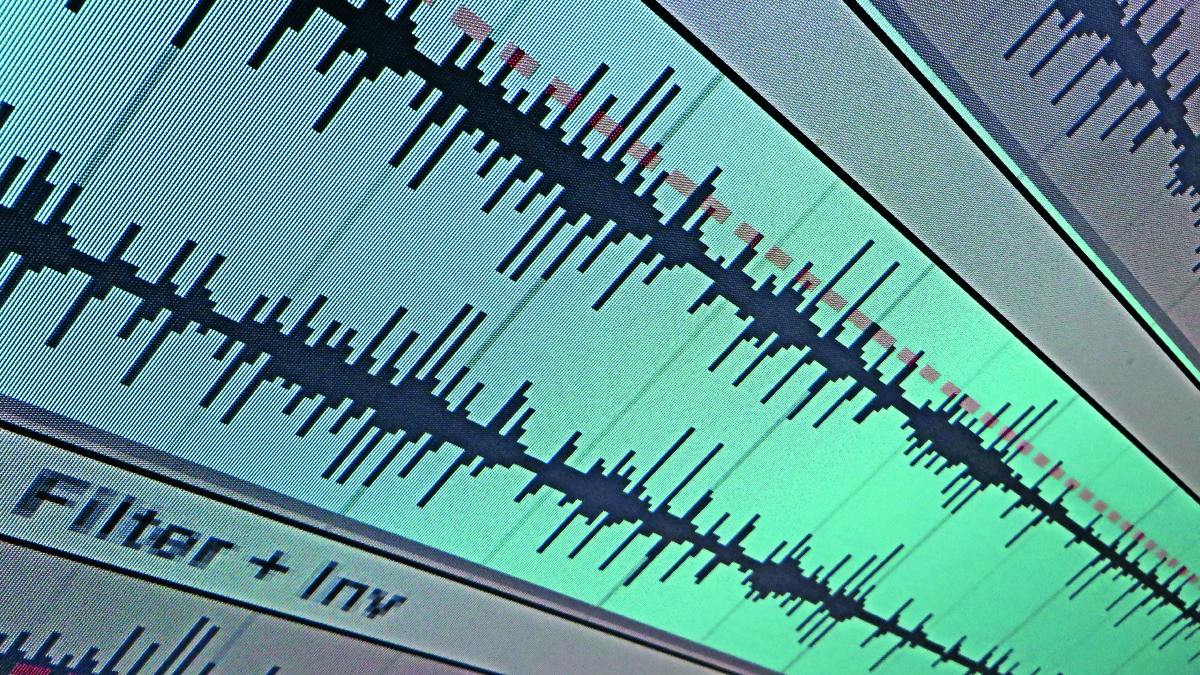
6. How to layer two beats together and not make a mess
Some beats just work together, but most of them simply don't - that's when you need to apply some processing.
Explore a few simple techniques for getting two beats to sound good together.
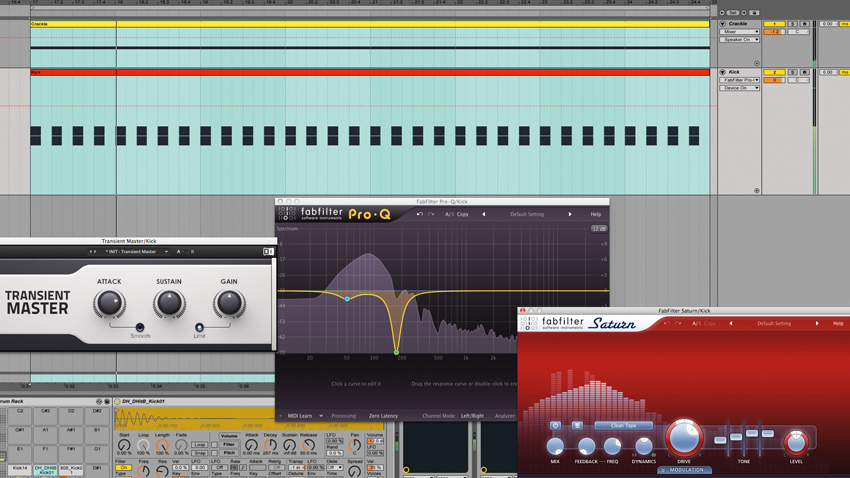
7. How to create a crunchy retro house beat with groove
Forget percussion loops and shiny drums - we're going back to house's roots with classic drum machine programming, garage-style swing and plenty of drive.
We dig out our 909 samples and effect plugins.
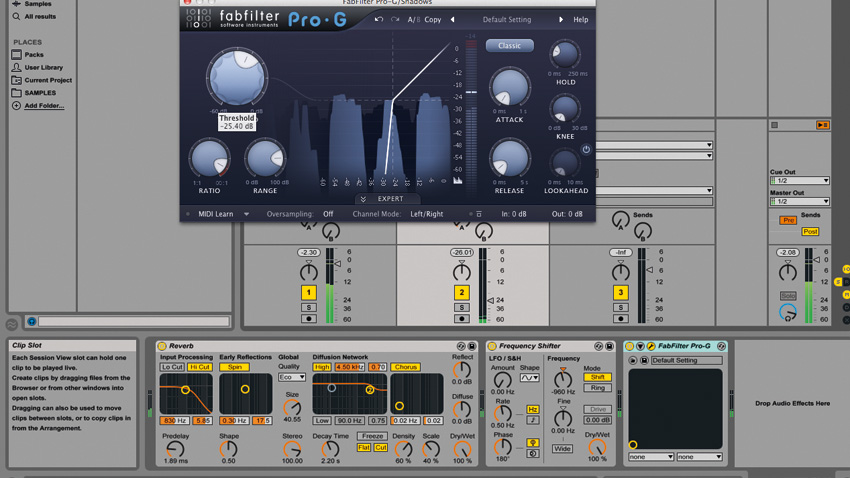
8. How to liven up a beat using a 'groove shadow'
Here's how to liven up or add atmosphere to one beat by using the reverb signal from another.
In this tutorial, we'll show you how to make a groove shadow, and introduce you to the plugins you'll need to do it.
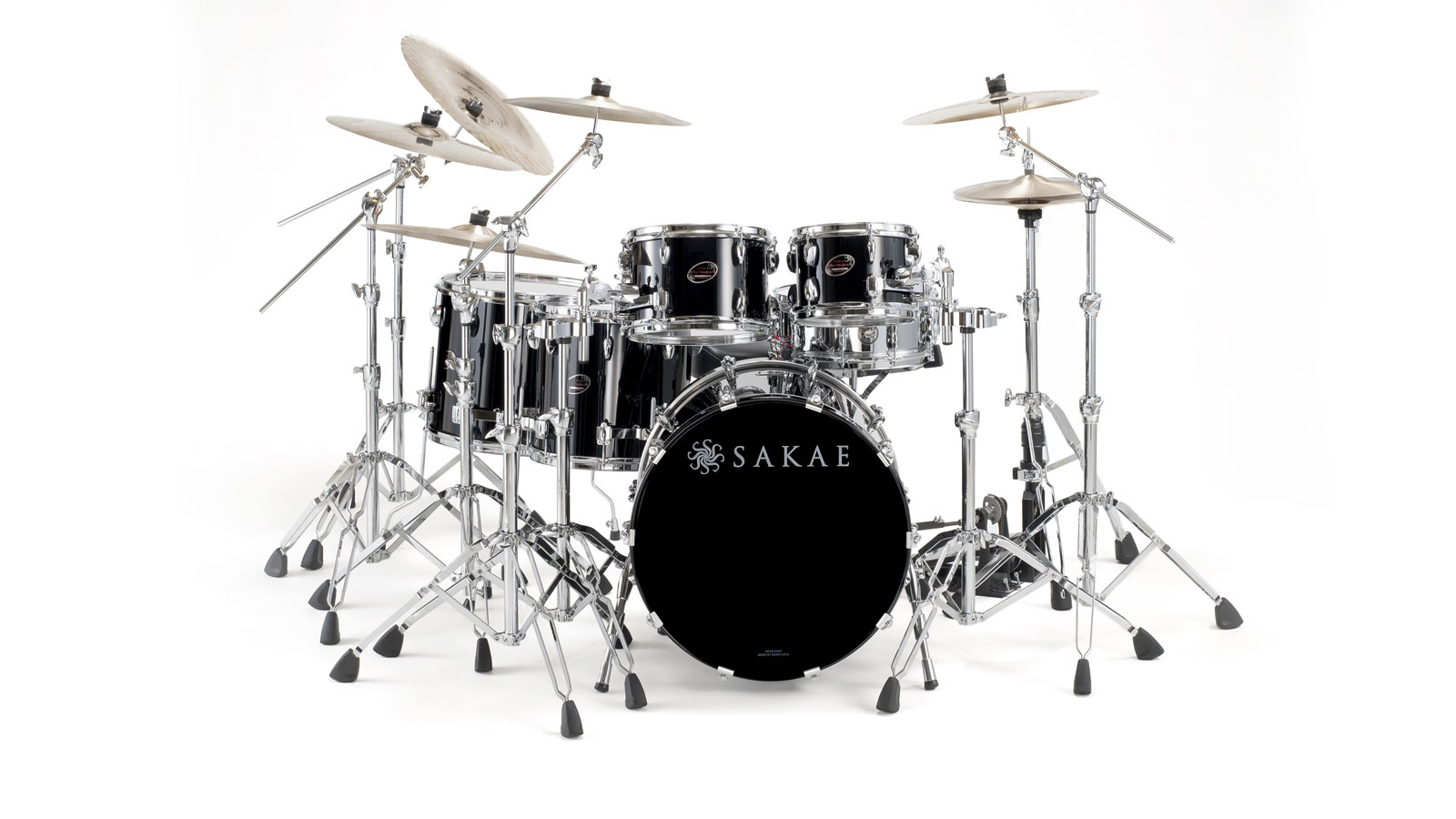
9. How to program realistic drum parts: the kit
One of the most fascinating aspects of drumming is the almost open-ended nature of the kit itself. Essentially, a drum kit can be whatever you want it to be, from a small three-piece setup to a massive tom tom-laden monster.
Get to know the elements of a drum kit and the roles they serve.
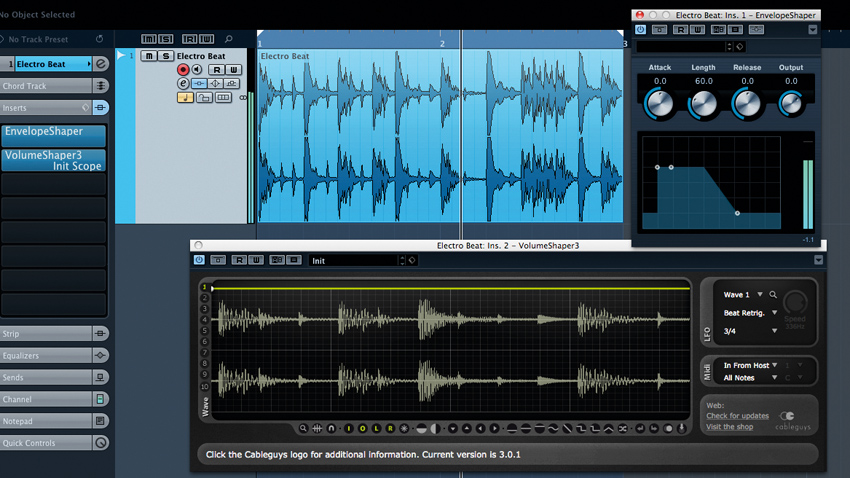
10. How to use envelope shaping on a drum loop
Envelope shapers and transient processors offer a clean and precise way to manipulate the dynamic interrelationships contained within an entire drum mix.
We show you how to add snap and air using Cubase's Enveloper.
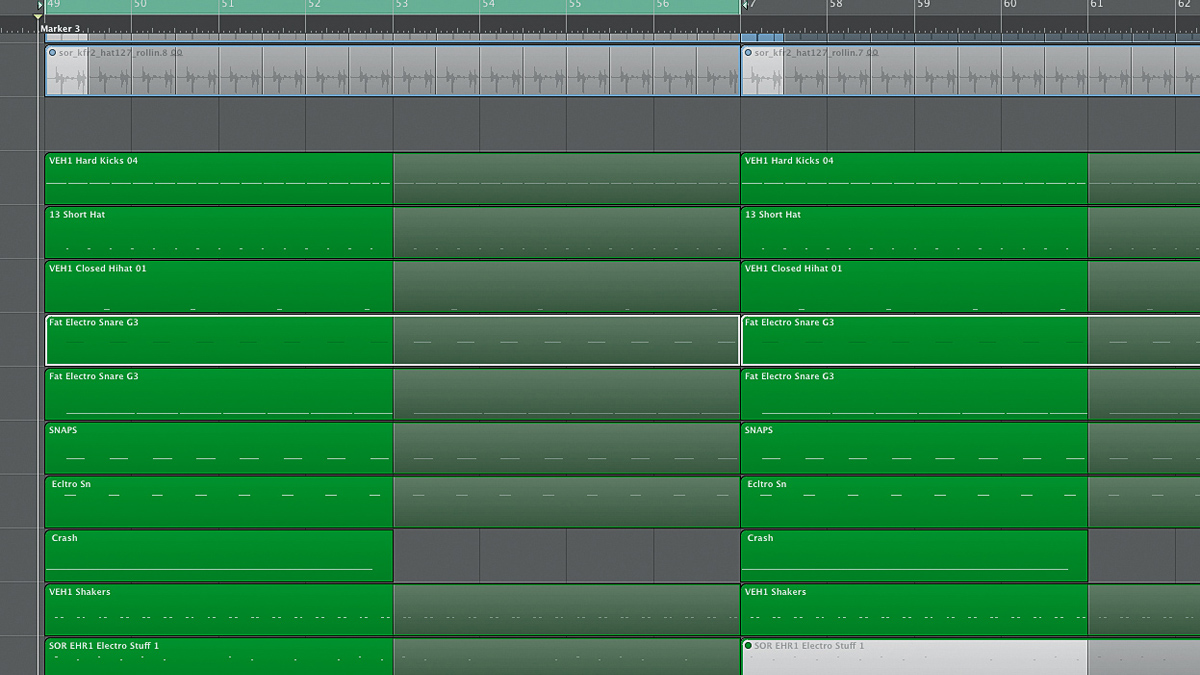
11. How to breathe life into loops with end-bar cuts and drops
Add feel to loops and grooves with these drop-out, cut and variation tips.
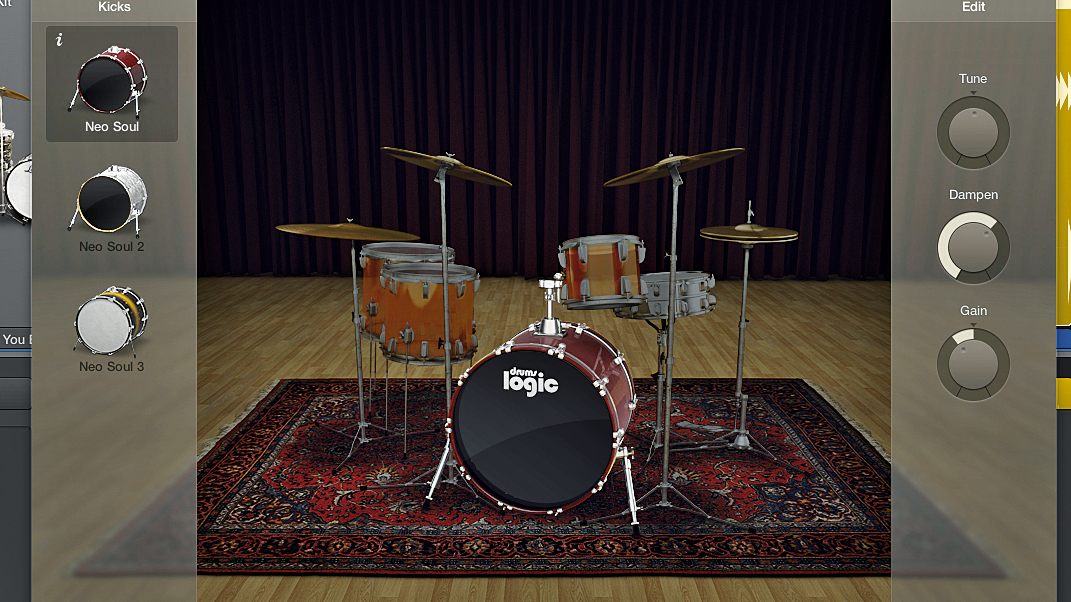
12. How to make beats with Logic Pro X's Drummer and Drum Kit Designer
Drummer is perhaps Logic Pro X's most impressive new feature. It has 15 'session drummers', and each of these virtual players offers a set of tweakable MIDI grooves based on real performances, played on their own multisampled drum kit (from the new Drum Kit Designer instrument).
In the step-by-step below and the video above we show you how to get started with Drummer and explore some of its features.
How to make beats with Logic Pro X's Drummer and Drum Kit Designer
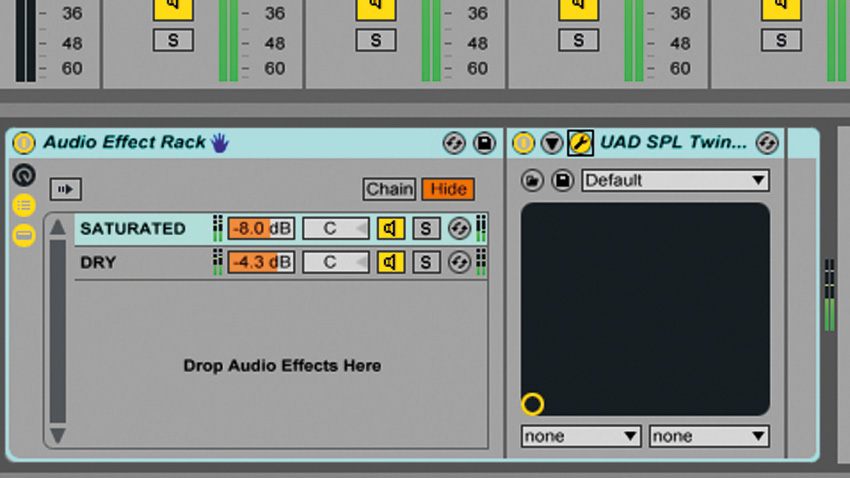
13. How to use saturation on a drum buss
Saturation and distortion effects partner well with drums. Weaker hits can be beefed up, harsh hi-hats can be softened and thickened, layers can be squashed together, and entire busses can be glued into one cohesive drum unit.
Discover how to make drums sound better through distortion.
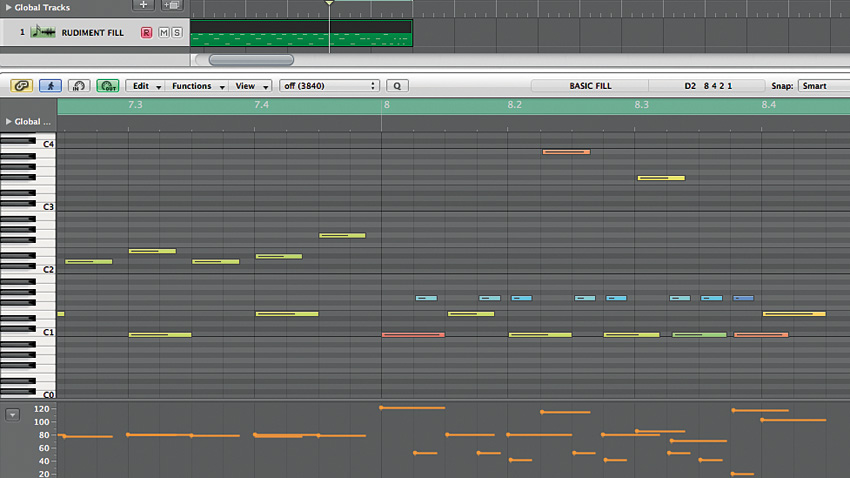
14. How to program realistic drum parts: fills
Unless you want your faux-acoustic drum grooves to come across as unremittingly relentless, you need to know how to throw fills into them.
Append your riddims with some rhythmic pyrotechnics.

15. 8 ways to make better drum 'n' bass tracks
From digging through crates to gelling beats and bass, our indispensable octet of DnB production edu-bites will aid you immensely in your campaign to become king of the jungle.
Take your DnB production skills to the next level with our essential tips and tricks.
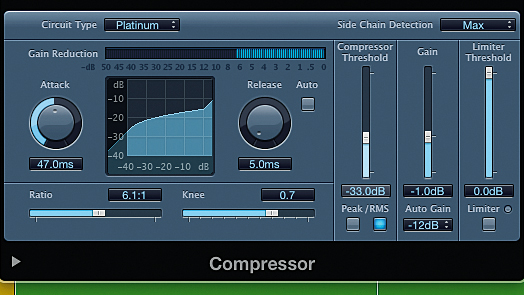
16. How to beef-up drums with snap compression
Dynamics processors are on of the most important tools in any producer's toolbox, yet they're not especially intuitive, and many producers struggle to understand how they really work, which sometimes results in them doing more harm than good to their mixes.
Learn to balance the dynamics of your snares and rimshots for maximum impact.
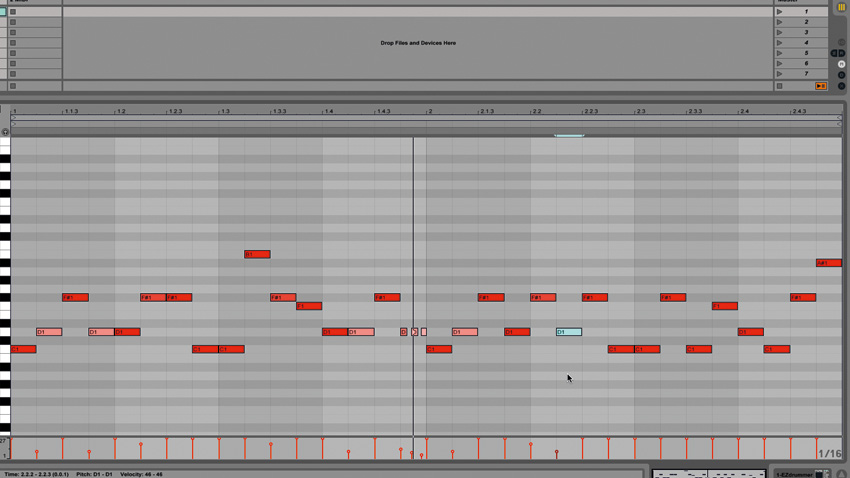
17. How to add clarity and funk with linear drum programming
Linear drumming describes the playing (or programming) of a drum pattern in which no two kit elements (drums, hats and cymbals) are struck simultaneously. For the drummer, this means only one limb ever makes contact with the kit at a time, and for the programmer, that only one note is ever active at a time on the MIDI piano roll or drum editor.
Here’s how to simultaneously simplify and funk up beats and fills.

18. How to build a drum 'n' bass breakbeat
While familiar Funk breaks will always be an intrinsic element of DnB, the decision to use one can restrict your creativity somewhat. An alternative option is to engineer your own 'classic' breakbeat, enabling precise control over every drum element from the ground up.
Let's use a virtual drummer to engineer our own retro breakbeat.

19. How to program flams in drum fills
The humble flam. Surely the most elementary of all drum rudiments, yet also probably the most frequently deployed - and cetainly the most hard-hitting. Nothing more than a pair of hits, the second a little bit louder than the first, so close together as to almost sound like a single stroke, the flam is easy to play, easy to program, and makes an effective tool for accenting and adding emphasis.
How to use the simplest of rudiments to beef up your beats.
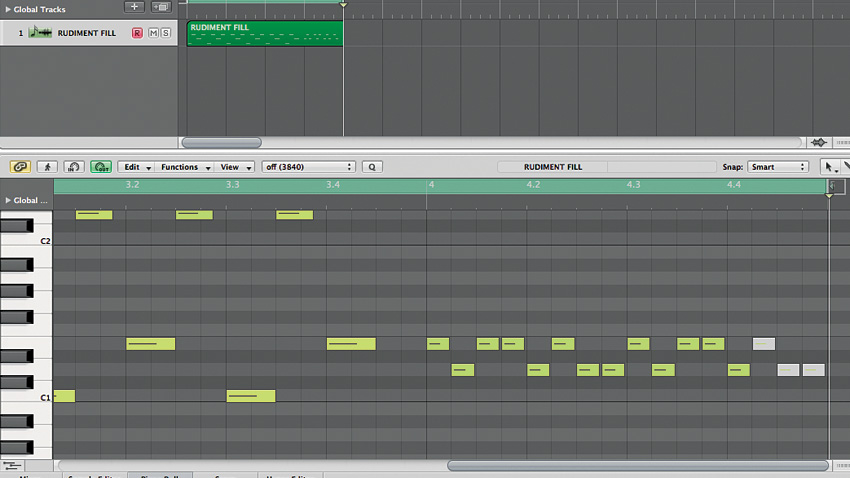
20. How to program realistic drum parts: rudiments
Rudiments are fundamental rhythmic patterns comprising specific sequences of left/right stick/pedal hits, and essentially forming a library of playing techniques and 'phrases' that make up the 'vocabulary' of drumming. On their own they may look like a series of dry technical exercises, but they're actually used within songs to augment patterns or as the basis for complex fills and solos.
Unlock the DNA of drumming and improve your groove.
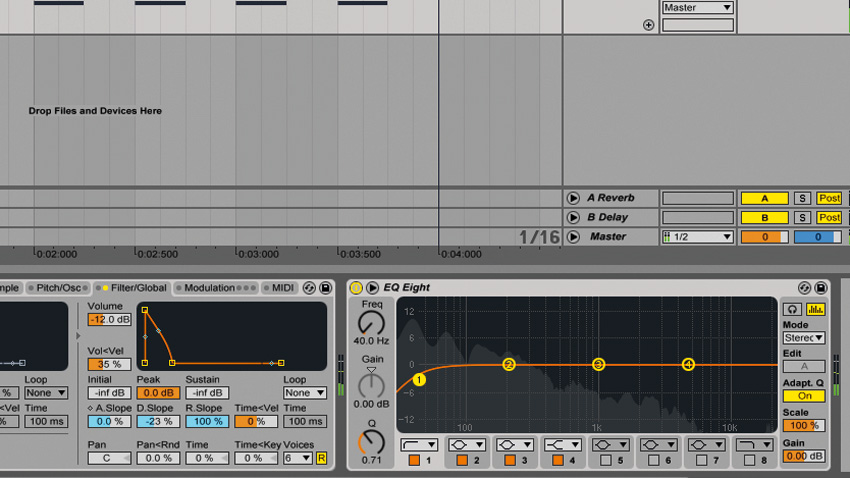
21. How to trim the fat from your kick drums
A solid-sounding low-end is essential in any dance music mix, and this is particularly true for minimal styles because there's less going on in the mids and highs to cover up inadequacies in the bass frequencies.
We show you how to make those kick drums lean and mean.
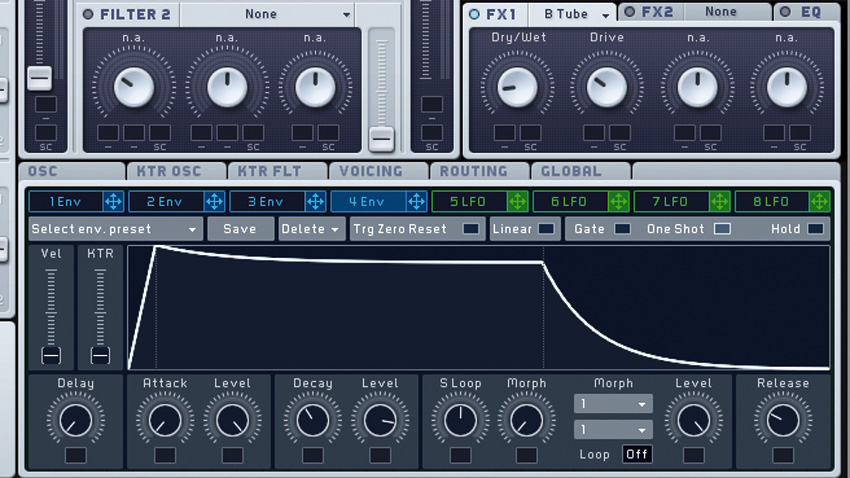
22. How to improve your mix with a second kick drum
It's always essential that the tuning of your kick drum matches the track, but what do you do when your track changes key? Should the kick move, too, to follow the chordal moves and maintain the 'in tune' relationship? In short, no.
Glue your kick drum to the mix with a subtle synthesised backup.

23. 6 common drum programming mistakes (and how to fix them)
If you're not a drummer, but you don't want to rely on sampled loops and prefab MIDI files for all your acoustic drum kit tracks, at some point you're going to have to learn to program your own 'human' beats.
Make your bad beats sound badass.
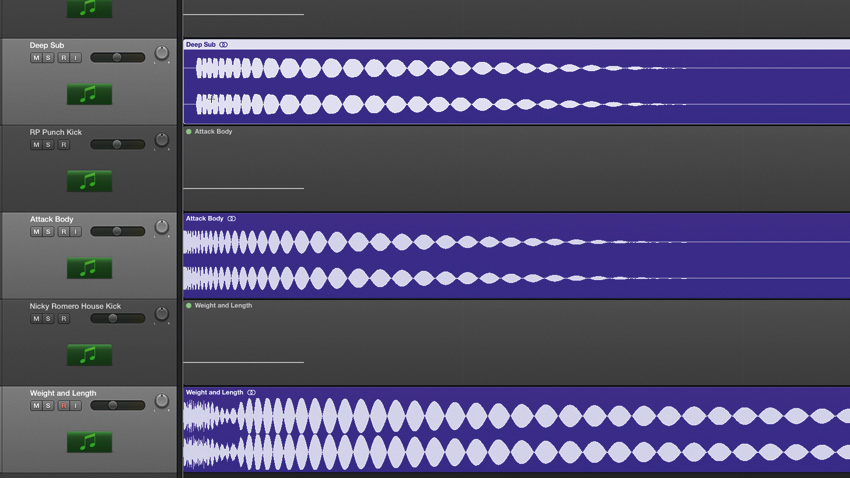
24. How to construct a hybrid kick drum
We've all been through the routine of auditioning kick drums, trying one sample after another in the search for that 'perfect' one-shot solution to our track's low-end needs. We've also all suffered that frustration of finding a sound that attacks well but then decays badly, or that lacks adequate punch at the front but provides a pleasing tail as it fades out.
Learn how to fuse sounds for a kick drum that's greater than the sum of its parts.
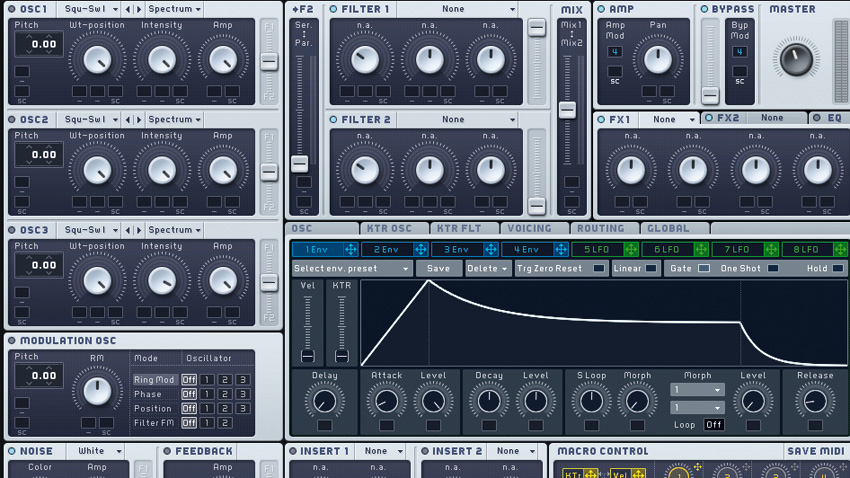
25. How to synthesize drums with noise in Massive
Electronic music is based upon synthesized drums and electronic drum machine sounds - made popular by Kraftwerk, various '80s synthpop bands and the whole host of analogue drum machines that we've become accustomed to over the years. These sounds can be created with pretty much any modern synth plugin, and here we'll show you the basics of how to do it.
Noise-based drums are a staple of dance music - we show you how to create them from scratch.
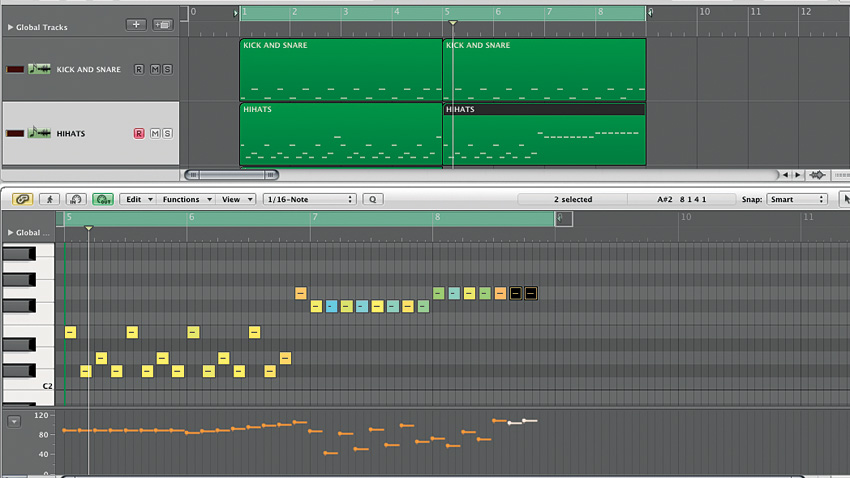
26. How to program realistic drum parts - humanising and variation
In this tutorial, we'll show you how you get from a basic programmed MIDI drum pattern to something that sounds like it's being performed by a real drummer. This is achieved using a combination of velocity, timing and the use of articulations.
Dial in some organic feel and loosen your grooves.
How to program realistic drum parts - humanising and variation

27. 9 steps to perfect programmed percussion
In many styles of music, a basic 'kick, snare and hats' drum beat is the backbone of the rhythm, but that on its own is often not enough to make your track groove. To really get things shuffling along nicely, you'll need to layer up some ancillary percussion parts to add excitement, flavour and groove to your beat.
Get your rhythms rolling right.
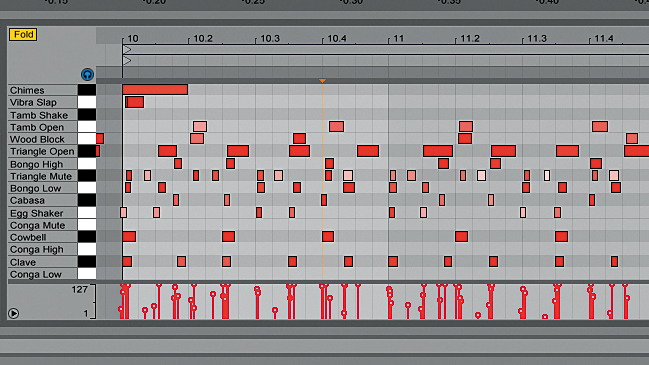
28. 11 radical rhythm tips and tricks
As a musician of any experience and ability level, it surely won't have escaped your notice that the concept of time is intrinsic to all forms of music, as language is to literature and colour is to painting.
Handy hints for working with alternative time signatures and complex drum patterns.

MusicRadar is the internet's most popular website for music-makers of all kinds, be they guitarists, drummers, keyboard players, DJs or producers.
GEAR: We help musicians find the best gear with top-ranking gear round-ups and high-quality, authoritative reviews by a wide team of highly experienced experts.
TIPS: We also provide tuition, from bite-sized tips to advanced work-outs and guidance from recognised musicians and stars.
STARS: We talk to artists and musicians about their creative processes, digging deep into the nuts and bolts of their gear and technique. We give fans an insight into the actual craft of music-making that no other music website can.
"A classic compressor for free on Valentine's Day – it must be love!": Universal Audio is giving away an 1176 plugin as a Valentine's gift - here's how to get it and use it
“A magical part is this sidechain with the bass”: Lady Gaga breaks down Disease in new studio video
"A classic compressor for free on Valentine's Day – it must be love!": Universal Audio is giving away an 1176 plugin as a Valentine's gift - here's how to get it and use it
“A magical part is this sidechain with the bass”: Lady Gaga breaks down Disease in new studio video









